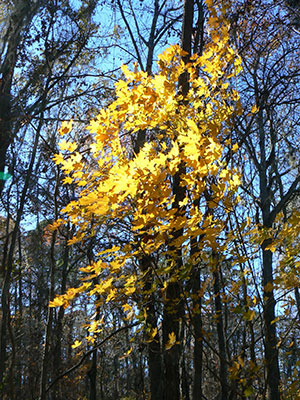Florida Maple

With its attractive yellow or orange fall leaf color, Florida maple is ideal for use as an ornamental or shade tree. While smaller and less showy than the related northern sugar maple, it’s better suited to Florida, due to its higher heat tolerance.
The Florida maple can reach 60 feet in height, but is more often seen at heights of 20 to 30 feet. This maple provides beautiful fall colors in muted yellows and oranges, and older trees have very attractive ribbed gray bark.
Plant your Florida maple in full or part sun. It’ll do well in a variety of soils and is tolerant of short drought periods. Irrigation can help your tree pull through extended drought.
The roots are often shallow, so this tree should be planted where a mower will not damage them and people will not trip over them.
Taxonomy
The Florida maple (Acer saccharum subsp. floridanum) is considered by some taxonomists to be a sub-species of sugar maple (Acer saccharum), while others consider it to be a separate species.
This is a taxonomic question that has not really been resolved. In the past, the Florida maple may have been listed as a distinct species (called either Acer barbatum or Acer floridanum) or as a subspecies of the more broadly distributed sugar maple, as Acer saccharum subsp. floridanum.
Currently, the taxonomic resources used by our specialists (the Atlas of Florida Plants, the USDA GRIN database, the USDA PLANTS database, and The Plant List), are all in agreement and use Acer saccharum subsp. floridanum for Florida maple. These resources treat A. barbatum and A. floridanum as synonyms.

Modern phylogenetic and biogeographic studies are generally necessary to clear up taxonomic questions like this. Research continues to be done related to the taxonomy of these, and many other plant species.
